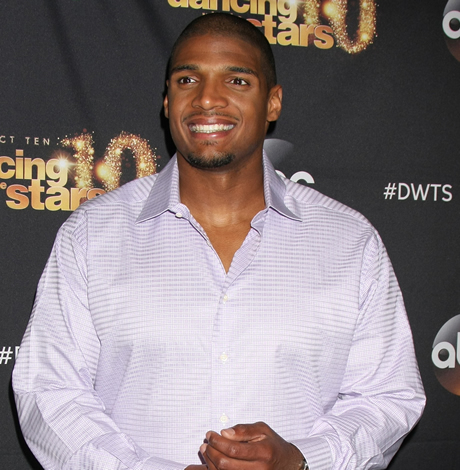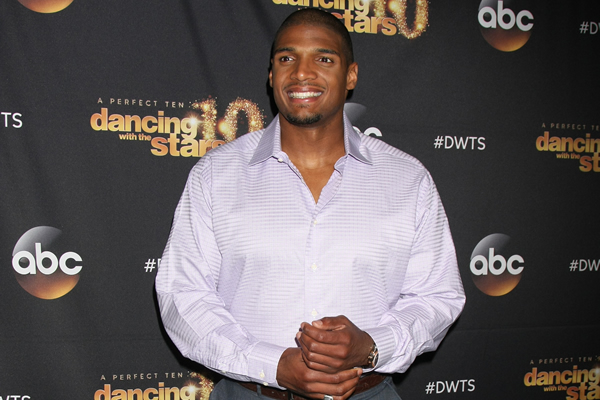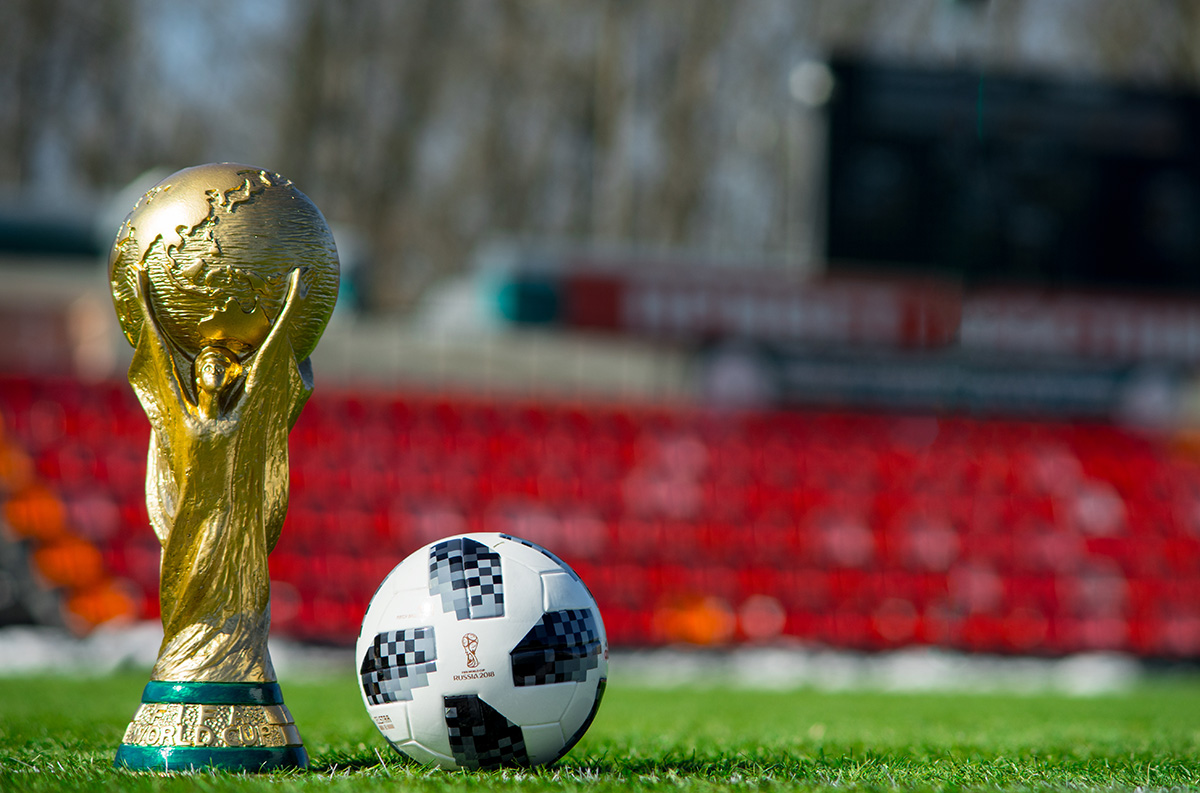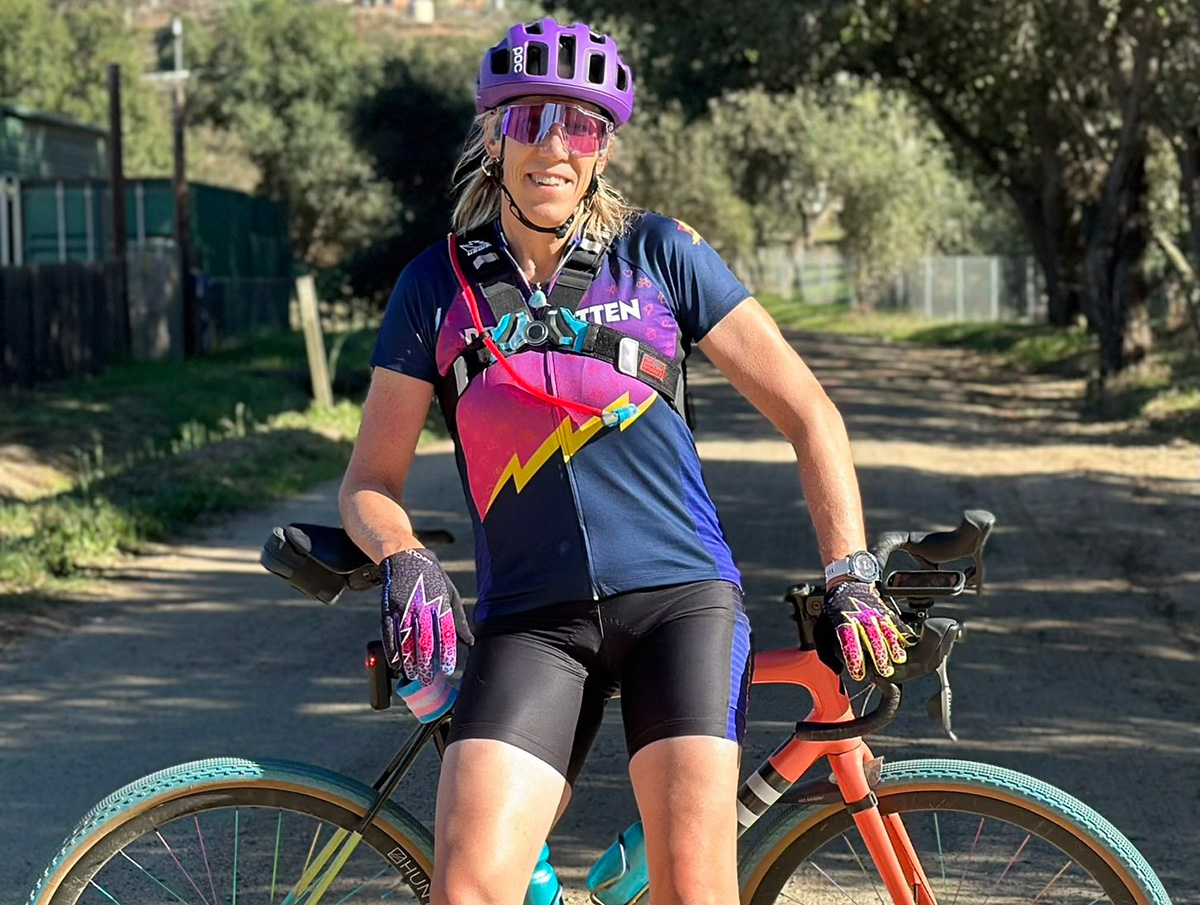Sports
Rethinking the coming-out template for athletes
Despite success stories, Michael Sam lingers as cautionary tale


Michael Sam never played a down in the NFL after coming out and being drafted. (Photo by kathclick; courtesy Bigstock)
Tanner Williams didn’t have a typical coming-out sports story. In 2014, the 22-year-old Norman, Okla., resident, a pole vaulter on the University of Oklahoma track and field team, posted on Facebook that he’d gotten engaged to Scott Williams, his boyfriend of less than a year.
He wrote about the experience in a more prominent coming-out moment when Outsports, an LGBT sports news site, published his story in April 2015.
Even in Oklahoma, which Williams himself (he’s a native of Ardmore, Okla.) admits is “a very conservative and religious state,” the experience has been overwhelmingly positive, he says.
“It’s probably been one of the greatest things I’ve ever done,” he says. “It helped me, my family, my friends to know that it’s OK to be gay. It made a huge impact in Oklahoma with the inclusion-in-sports aspect. … I got a lot of positive attention. It’s all been great.”
Williams had read other coming-out stories on Outsports and became friendly with Jim Buzinski, who co-founded the site in 1999 with Cyd Zeigler, Jr.
“I think I just messaged him thanking him for all the stuff he’s done and told him, ‘If you ever want to share my story, I could probably come up with the courage,’” Williams says.
The only thing he might have done differently is to have come out sooner.
“There were a few negative comments, but it was pretty mild,” he says. “After the Outsports piece ran and some other papers here in Oklahoma wrote about it, there were a few comments. People said, ‘Why is this news?’ and a few things like that. But then I was elected co-captain of my team and it just showed that they respected me and being gay has nothing to do with what kind of person or athlete you are. It was even more positive. It got an overwhelming amount of attention through Outsports.”
But how typical is Williams’ experience? Buzinski says in 16 years of telling the coming-out stories of “probably a couple hundred” athletes on “all levels,” there’s rarely been any issue.
“We leave the final decision up to the athlete,” Buzinski says. “The bottom line for them is once you come out, you can’t go back in. If you’re going to come out, even in some of the smaller sports, you have to know that there’s going to be different levels of attention and you have to be ready for that. Most of the time they write their own stories and even if we work, shape and edit them, they have to sign off on the final version. It’s their story to tell.”
He says a few times they’ve had athletes ready to come out, but he and Zeigler have urged them to wait.
“We’ve never pushed,” Buzinski says. “It’s frustrating to us as journalists, but we’ve never forced [anyone].”
He says negative feedback has been rare. He recalls “maybe two or three” who asked later for their stories to be removed from the Outsports website, which is not practical since the pieces live on in web archives. He guesses “less than” five have had second thoughts after the fact.
With lots of positives to point to — everything from Jason Collins becoming the first openly gay athlete to play in the NBA to 41 out LGBT athletes competing at this month’s Rio Olympics — and LGBT rights overall making previously unheard of strides in the U.S. and around the world, some assume there’s little risk in coming out.
Yet the sting of Michael Sam’s aborted NFL career is still fresh and there’s also a sense in some circles that things aren’t always so rosy for out athletes once the media buzz and excitement wears off.
Robbie Rogers, a soccer midfielder for the Los Angeles Galaxy who came out in 2013, told the Chicago Tribune this summer he assumed he was on the outer cusp of a sort of domino effect of male athletes coming out that never materialized. Despite many out female athletes in the WNBA, Rogers is now the lone openly gay male athlete in the U.S.’s five major pro sports leagues (the NBA, MLB, NHL, NFL and MLS).
Sam came out to great fanfare in 2014 with ESPN, New York Times and Outsports profiles (Zeigler writes of how it all went down in a lengthy Outsports piece called “The Eagle Has Landed”). He was drafted by the St. Louis Rams in the seventh round of the 2014 draft but was cut at the end of training camp before ever playing a game. He also had a short stint with the Dallas Cowboys’ practice squad but was waived. In 2015, he played a single game with the Montreal Alouettes becoming the first openly gay player to play in the Canadian Football League before leaving citing “mental health” concerns.
Since then, he’s made many appearances for LGBT rights, did a season of “Dancing With the Stars,” appeared in a documentary on OWN (the Oprah Winfrey Network) and returned to the University of Missouri (his alma mater) to pursue a master’s degree. His NFL career is, for all practical purposes, likely over.
Although stressing he has “no regrets whatsoever,” as he told Dan Patrick on his eponymous show last year, Sam has now said in several interviews that he’d likely be in the NFL today if he’d not come out.
“It probably would have been better for me if I didn’t come out,” he told Patrick. “I would be on a roster.”
He also told Edge of Sports, “I think if I never would have came out, never would have said those words to the public, I would still be currently in the NFL. But because of me saying those words, I think it could have played a huge part in my current situation.”
Even Zeigler agrees.
“He would have played in the NFL last season if he hadn’t come out,” Zeigler wrote in a September 2015 Outsports column. “The NFL teams have, individually and collectively, discriminated against Sam because he is an openly gay man. Homophobic jerks keep saying that’s just sour grapes, but it’s not. He’d be in the NFL right now if he hadn’t come out.”
Sam parted ways with former agents Cameron Weiss and Joe Barkett and Howard Bragman, the gay PR guru who masterminded Sam’s coming-out media strategy. Bragman, with whom Sam had a profanity-strewn clash in clips seen in the OWN documentary, is laying low on the matter now. He declined a Blade interview request.
Buzinski says it’s hard to say to what degree homophobia might have hurt Sam’s career. There were several contributing factors — the Rams having been well stocked in defense (Sam is a defensive end) at the time of the draft, perhaps most notably.
“There were probably X number of teams that wouldn’t touch him because he was gay, but not all 32,” he says. “The NFL has a ways to go, but if teams thought Michael Sam could have helped them, they would have picked him. I don’t believe it was exclusively because he was gay. That’s something that can never be fully proven or disproven. It’s an assertion that can never be knocked down or supported. There are hundreds of guys who are flushed out of the NFL every year for all kinds of reasons.”
Christina Kahrl, an ESPN sportswriter who’s transgender, isn’t so quick to let the NFL and some of its other franchises off the hook.
“I’m a Raiders fan so I’m going to tell you this as an LGBT person,” Kahrl told the Blade. “When Michael Sam was up, the Raiders were one of the worst defensive teams in the league. They should have taken a chance on him. You couldn’t get any worse than the Raiders were at the time, so if he’s out there and freely available, for Christ’s sake, sign the guy. Clearly there were some management problems. There’s no excuse why a team like the Raiders wouldn’t have taken a chance on Michael Sam.”
Kahrl says Sam’s advisers had him doing too many other things when he should have been focusing on football, a point he made himself to Winfrey.
“All of a sudden, he was everywhere doing everything, every gala, every GLAAD and HRC thing, he was dancing with the stars,” Kahrl says. “My throwaway line from that was we saw Michael Sam dancing with the stars before we even saw his first sack dance. He was famous before he ever did the thing he was supposed to be famous for doing, being a football player.”
And now with Jason Collins retired from the NBA, Sam’s never having played a down in a regular-season NFL game, David Denson, a 21-year-old outfielder who plays for the Minor League baseball team the Wisconsin Timber Rattlers, is the only other pro male out athlete to have come out. The wave many expected never happened.
“I’m at the stage where it’s kind of stupid,” Robbie Rogers told the Chicago Tribune in June. “I would never force anyone out and everyone has their own time, but come on, it’s 2016. A lot has changed in the United States and around the world. Obviously there are a lot of rights to fight for and a lot of hate here toward the LGBT community, but it’s an opportunity to be a role model for millions and change the lives of kids not only in sports, but in our culture and around the world. It’s a little disheartening.”
Gospel singer Jennifer Knapp, who says she experienced “total blackout” from the Christian music industry after coming out in 2010, knows what it’s like to go from industry darling to non-entity. Despite a handful of gospel singers who’ve come out in recent years, none were invited to the CCM United industry celebration concert last year that celebrated 40 years of contemporary Christian music. She says anytime money’s involved, homophobia is likely present.
“Sexual orientation is a very real factor but it’s one of those things that’s very difficult to put your finger on how much it affects things,” Knapp says. “You can say, ‘Well, [Michael Sam] would have been higher in the draft pick, but they already had a strong defense,’ or in my case, they have the cover of saying, ‘Well, we don’t stock her old albums because she’s not relevant in this field anymore, she’s not making gospel music,’ and I would agree with that to a point, but what you see happening — and this is a very difficult thing to measure — is when they try to minimize the impact that person had before they came out. … If your name is mentioned at all, it’s, ‘Oh where did she go,’ ‘What a waste,’ ‘What a black hole,’ ‘She’s not relevant,’ and when you couple that with a few things that may be true, it becomes this really murky thing that’s hard to pin down. Was Michael Sam pushed out of football because of his sexual orientation? Only the long run will tell.”
Tanner Williams disagrees and wonders why anyone in any field would want to be with people who don’t support being out.
“I think he’s throwing blame because he’s not in the NFL,” Williams says. “There are plenty of athletes out there who are very successful.”
Kahrl mentions athletes such as Collins and Denson who’ve been successful, but says several factors contributed to Sam’s trouble — getting involved in too many outside activities when he should have been concentrating on football, lingering anti-LGBT bias in football and the timing of his coming out.
“You might have said in 2013, 2014 that we were riding this wave that was going to go up and only getting better and instead what we’ve seen is this kind of chilling effect where the players in the professional leagues are more reticent in coming out,” she says. “The Michael Sam situation is a pretty clear indication of what I would call an observer’s paradox where all of us in the community want out athletes and want to get to the point where it goes to being no big deal.”
So what went wrong?
“I think a lot of people had a lot of good intentions from his advisers to people in the community to people in pro sports in general who all wanted the best thing and it still ended up getting screwed up,” Kahrl says. “It had nothing to do with Michael Sam’s ability to play football. He was doing all these wonderful things, but they had nothing to do with playing football and that was particularly frustrating and it had to have been immensely frustrating for him as well.”
Egypt
Iran, Egypt object to playing in Seattle World Cup ‘Pride Match’
Game to take place on June 26

Iran and Egypt have objected to playing in a “Pride Match” that will take place in Seattle during the 2026 World Cup.
The Egyptian Football Association on Tuesday said it told FIFA Secretary General Mattias Grafström in a letter that “it categorically rejects holding any activities related to supporting (homosexuality) during the match between the Egyptian national team and Iran, scheduled to be held in Seattle, USA, on June 26, 2026, in the third round of the group stage of the 2026 World Cup.” Football Federation Islamic Republic of Iran President Mehdi Taj told ISNA, a semi-official Iranian news agency that both his country and Egypt “protested this issue.”
The 2026 World Cup will take place in the U.S., Canada, and Mexico. The draw took place at the Kennedy Center on Dec. 5.
Iran is among the handful of countries in which consensual same-sex sexual relations remain punishable by death.
The State Department’s 2023 human rights report notes that while Egyptian law “did not explicitly criminalize consensual same-sex sexual activity, authorities regularly arrested and prosecuted LGBTQI+ persons on charges including ‘debauchery,’ prostitution, and ‘violating family values.’” Egyptian authorities “also reportedly prosecuted LGBTQI+ individuals for ‘misuse of social media.’”
“This resulted in de facto criminalization of same-sex conduct and identity,” notes the report.
The 2024 human rights report the State Department released earlier this year did not include LGBTQ-specific references.
Soccer has ‘unique power to unite people across borders, cultures, and beliefs’
The June 26 match between Iran and Egypt coincides with Seattle Pride. The Washington Post reported the Seattle FIFA World Cup 2026 Local Organizing Committee decided to hold the “Pride Match” before last week’s draw.
“As the Local Organizing Committee, SeattleFWC26’s role is to prepare our city to host the matches and manage the city experience outside of Seattle Stadium,” said SeattleFWC26 Vice President of Communications Hana Tadesse in a statement the committee sent to the Washington Blade on Wednesday. “SeattleFWC26 is moving forward as planned with our community programming outside the stadium during Pride weekend and throughout the tournament, partnering with LGBTQ+ leaders, artists, and business owners to elevate existing Pride celebrations across Washington.”
“Football has a unique power to unite people across borders, cultures, and beliefs,” added Tadeese. “The Pacific Northwest is home to one of the nation’s largest Iranian-American communities, a thriving Egyptian diaspora, and rich communities representing all nations we’re hosting in Seattle. We’re committed to ensuring all residents and visitors experience the warmth, respect, and dignity that defines our region.”
The 2034 World Cup will take place in Saudi Arabia.
Consensual same-sex sexual relations remain punishable by death in the country. The 2022 World Cup took place in neighboring Qatar, despite concerns over the country’s anti-LGBTQ rights record.
Sports
Gay speedskater racing toward a more inclusive future in sports
Conor McDermott-Mostowy says anti-DEI push is driving away corporate sponsors

LOS ANGELES — As the countdown begins to the February Winter Olympic Games in Milan, Pride House LA is shining a spotlight on queer athletes who are breaking boundaries both on and off the field. Among them is Team USA speedskater Conor McDermott-Mostowy – a fierce competitor and proud member of the queer community. With blistering speed on the ice and a steadfast commitment to equity in sports, Conor is doing so much more than winning medals – he’s redefining what it means to represent one’s country while representing one’s community.
McDermott-Mostowy is one step closer to the 2026 Winter Olympics after winning the recent silver and bronze medals at the U.S. Championships in speedskating. He appeared at a Nov. 1 event presented by Out Athlete Fund/Pride House LA in the organization’s efforts to raise funds to support Conor and other out athletes as they pursue their Olympic dreams in Milan 2026 and beyond.The Blade spoke to the star athlete to talk about resilience, representation, and the legacy he hopes to leave one day.
Blade: Huge congrats, Conor! Winning a World Cup gold is no small feat. Do you feel like this win proved something to the world – or more importantly, to yourself?
McDermott-Mostowy: Winning gold with my team last year was definitely a major goal achieved. That said, the event we won isn’t yet an Olympic event. The races that have had the most profound impact on me actually happened two years ago.
The first was the team pursuit in Obihiro, Japan. I’d always been more of an alternate for that event, since it’s typically raced by skaters who compete in both the 1500m and 5000m. But I’d been itching for the opportunity to race it at the World Cup level. I finally got that chance when a teammate had to pull out at the last minute due to a back issue. We led the race through six of eight laps, ultimately finishing third. While it was a little disappointing to fall out of the lead, I was proud to prove that I could contribute meaningfully and help the team medal.
The second race was later that year in Salt Lake City, my home ice. After competing in Japan, I came down with a lung infection that affected my performance at the next few World Cups. Fortunately, I had time to recover before the North American World Cups and World Championships. At the Salt Lake City World Cup, I was balancing competition with completing my undergraduate degree. I didn’t know what to expect, but I ended up finishing fifth in the 1000m—my highest individual finish ever—and posted a time of 1:06.91. That’s a very significant time in speedskating; only three other Americans have gone under 1:07 in that event, all of whom became world champions. That result felt like a turning point, showing me that an Olympic or World Championship medal wasn’t just a dream—it was within reach.
Blade: This PrideHouse LA event is a huge moment. What does that support from the queer community mean to you?
McDermott-Mostowy: It’s incredibly meaningful. Being queer in Olympic sport can be very isolating, both inside and outside the sport. I barely have time to socialize outside of skating, and relocating to Salt Lake City doesn’t exactly help when it comes to queer community. So having that kind of solidarity and support from the wider LGBTQ+ community really means a lot.
Blade: Do you remember the moment you realized skating could take you all the way to the Olympics?
McDermott-Mostowy: There hasn’t been one single moment. It’s been a series of them. Over the years, I’ve had many races that shattered the limits I thought I had and inspired me to reach higher. That Salt Lake City race was one of them. It made me realize I shouldn’t just aim for the Olympics. I should aim for medals.
Another key moment came in 2018 at my last Junior World Cup, when my teammate and I finished 2nd and 3rd in the mass start. That event is similar to short track but held on a long track. It was my first full year focusing on long track after previously dabbling in it, and we had no expectation of medaling. But after we did, I realized I might actually have a future in this discipline—and that I could be competitive on the world stage. It was a pivotal realization, especially as I was trying to decide whether to continue skating or pursue a traditional college experience.
Blade: What initially drew you to speedskating? How did you get into the sport—and what’s kept you motivated?
McDermott-Mostowy: I grew up on skates. I started at age two and became a strong skater early on. But I never had any interest in hockey or figure skating. One winter, I was skating with my family on the C&O Canal in Washington, D.C., when a guy skated past us on these wild-looking speed skates. I was immediately intrigued. My parents found a local club, which happened to be run by three-time Olympian Nathaniel Mills, and I was hooked.
What’s kept me going is simple: I love it. This isn’t a sport you get rich in. I’ve only earned more than $20,000 a year twice in my career, and you can’t use it to pay for college either. The motivation has to come from within—the pursuit of excellence, the dream of going to the Olympics, and pure love for the sport.
Blade: What’s been your toughest race to date, and what did it teach you?
McDermott-Mostowy: That would be the team pursuit in Japan. I wasn’t expecting to race it and had already competed in a full weekend of events before getting the call. Team pursuit is arguably the toughest event in speedskating. Stepping up without being mentally or physically prepared was a challenge, but I did it. It showed me I could push through, even under extreme circumstances.
Blade: You’ve made headlines not just for your speed, but for your openness. What was it like coming out publicly in the world of elite sport?
McDermott-Mostowy: By the time I was publicly identified as gay, I had already been out to anyone who asked. So “coming out” doesn’t feel like the right term. It wasn’t a big declaration. I had the benefit of growing up seeing openly gay athletes and being part of a supportive community. I never felt the need to hide who I was.
Eventually, as I started achieving more on the ice, people began noticing me and the content I posted, and they put two and two together. When I was asked to speak publicly about being an openly gay athlete in speedskating, I didn’t hesitate.
Blade: What have been the biggest challenges in your career – physically, mentally, or otherwise?
McDermott-Mostowy: Honestly, my entire career has been about overcoming challenges. The two biggest obstacles have been illness and finances.
I’ve dealt with asthma, a norovirus that derailed my chances in 2022, and a fatigue condition last season that affected my performance. These setbacks take a toll. Not just physically, but mentally. When you invest everything into your sport, being forced to pause or scale back is a huge emotional hurdle.
Financially, speedskating is a tough path. Even as a consistent top-20 skater in the world, I’ve only broken $20k twice in a year, and we’re paid for just nine months, even though we train year-round. I’ve leaned on friends and family for support many times just to make ends meet.
Blade: Have you ever been told – explicitly or implicitly – that being openly gay could hurt your chances with sponsors or coaches?
McDermott-Mostowy: Never with coaches. In our sport, selections are based on the clock, not someone’s opinion. My coaches have always been great.
But when it comes to sponsorships, especially over the past year, I’ve noticed a shift. As anti-DEI sentiment grows, brands are backing away from anything that could be seen as “controversial.” Being openly gay seems to fall into that category now. Since most of our income comes from sponsorships, that retreat is deeply felt.
Sports
Trans cyclist’s victory sparks outrage in conservative media
Katheryn Phillips is originally from DC

On the heels of UPenn erasing the record of the first openly transgender NCAA Division I All-American swimmer and the U.S. Supreme Court’s decision to tackle bans on trans student-athletes, right wing media is now all hot and bothered about the latest trans woman who won a cycling championship — even though she competed according to the rules.
On Tuesday, 58-year-old Katheryn Phillips finished first in USA Cycling’s Lyons Masters National Championship race for women aged 55-59, with a time of 1:42:10, according to the official results posted by the organization. The record shows her gender as “F” for female.
One second behind Phillips was Julie Peterson, with a time of 1:42:11 — as were three other cyclists: Mary Beth Grier, Andrea Cherniak-Tyson, and Carolyn Maddox.
Peterson, 57, was so outraged, she told Fox News she refused to stand on the podium in second place next to Phillips. Her story was swiftly shared by the New York Post (also owned by Fox’s parent company News Corp.), the Daily Mail, Breitbart, and other conservative media.
Both Peterson and another competitor are accusing USA Cycling of “hiding” that a transgender woman had registered to race.
“It was hidden from us. Katheryn Phillips, KJ’s name, was not on that list. And I checked it up all the way to the point of closure when we couldn’t register online anymore,” Debbie Milne told Fox.
“If I had known, I wouldn’t have spent thousands of dollars in travel and time off work to come and do a race,” Peterson said. Fox welcomed Milne, 56, who finished seventh on Tuesday, to Fox & Friends Thursday morning.
(Video courtesy of Fox News)
Peterson told Fox she did complain to USA Cycling officials prior to the race. Both Milne and Peterson referred to Phillips as a male, and with “he/him” pronouns.
“To be fair to all humans, if we want to say ‘him’ or ‘her,’ he was born a biological male, that is a fact,” Milne said. “And that is the thing that makes it an unfair advantage. Whatever has happened after that is a whole different topic.”
“I said, ‘I don’t want to race against a man,’ and they quickly scolded me and said ‘Oh, you can’t call him a man,’ and I’m like ‘Well, he is a man,’ so I was quickly scolded and corrected that it is a woman and I don’t even know what to say.”
USA Cycling did not respond to the Washington Blade’s emails requesting comment.
Phillips, who goes by Kate and by “KJ,” is a former rugby player with the D.C. Furies, who stated in the comments of a 2024 article published by Zwift Insider that she was the first out trans athlete in the U.S. to compete under the 2004 International Olympic Committee’s guidelines on trans participation.
“When USA Rugby told me about the IOC decision in 2004, I raised my hand to be included. I experience nothing but joy when I play, ride, and race,” Phillips said.
As the Blade has reported, the International Olympic Committee drastically revised those rules in 2021, and in March, Republican lawmakers in D.C. demanded the IOC ban trans female athletes from women’s sporting events altogether.
The Blade also reached out to Phillips for comment but as of press time we have not received a response. She told Zwift Insider in March 2024 she does not let those who disapprove or spread hate impact her performance or her attitude.
“I am unaffected by dissent. I love, I share joy, I am me, and I have been my authentic self for decades,” she said. It’s been reported Phillips came out in 1999, and told Zwift Insider she considers herself a lifelong cyclist.
“I’ve been on a bike for as long as I can remember,” said Phillips. “As kids, my friends and I rode all over town, we were feral kids; no cell phones, no trackers … we just roamed, and nobody got in trouble or hurt bad enough not to ride home … Scrapes/bruises/cuts were not an issue for us. In my teens, I worked for myself as a court/legal messenger, doing all of the work via my bike until I got a car. Raced BMX as a kiddo (when I mowed lawns to cover the race entry fees), I did MTB stuff (non-racing) and Sprint/Olympic Triathlons in my 30’s, and now I’m racing on Zwift, Road/Gravel, and CX in my 50s.”
In the comments section, Phillips made clear she’s not competing to win.
“I don’t do sports for victory, I do it because like many other women, I am an athlete to my core,” she said. “Unlike some, I am not there to WIN, I am there to do my best with the competitors and teammates I have around me trying to do the same…we are in it for the experience. I rejoice in their wins, and a lot of joy is reflected back to me when I have a good day.”




















